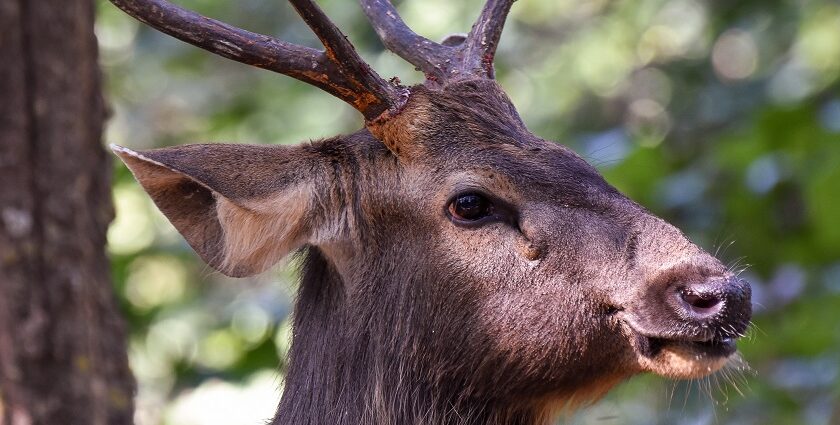India is home to some of the biggest jungle safaris in the country. Across its forests, grasslands, and river plains, the biggest jungle safaris in India take visitors deep into the natural habitats. Here, tigers roam, elephants gather, and rare species thrive all along. Each landscape shapes the wildlife experience, some are dense and humid, while others are dry and open, making sightings vary with seasons. From the rugged terrain of Ranthambore to the floodplains of Kaziranga, these safaris offer a closer look at India’s diverse ecosystems and the wildlife.
10 Biggest Jungle Safaris In India
Here are the top wildlife destinations which you can visit for the most exciting and biggest jungle safaris in India:
1. Jim Corbett National Park
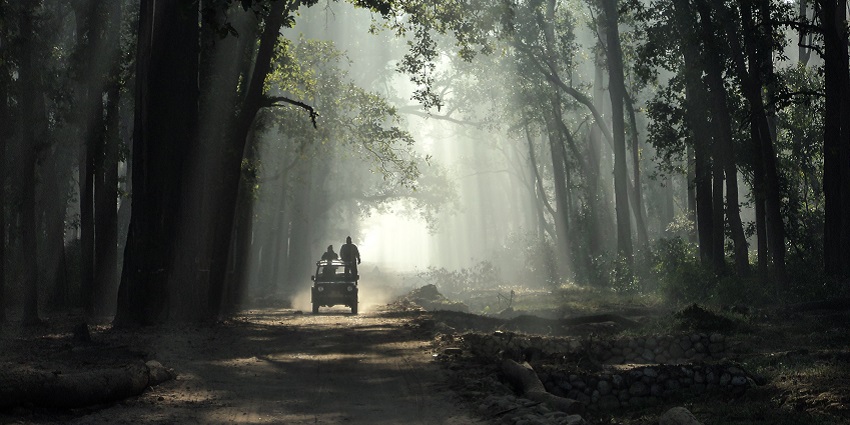
Photo: Deepti Dhamal / Wikimedia Commons
Jim Corbett, India’s oldest national park, stretches across the lower Himalayan hills, featuring rivers, grasslands, and dense forests. Tigers move through these woodlands, while elephants gather by the Ramganga River in the early mornings. Visitors on forest drives can often spot small deer that freeze when they hear approaching vehicles. During winter, animals are easier to see as the vegetation thins up, making it a good time for photography. The park’s landscape turns lush green during the monsoon and dries to yellow-brown in summer, when animals gather around shrinking water sources.
Major Attractions: Dhikala Zone, Bijrani Zone
Ideal Trip Duration: 2 – 3 days
Nearest Airport: Pantnagar Airport (approximately 80 km away)
Nearest Railway Station: Ramnagar Railway Station (approximately 12 km away)
2. Kanha National Park
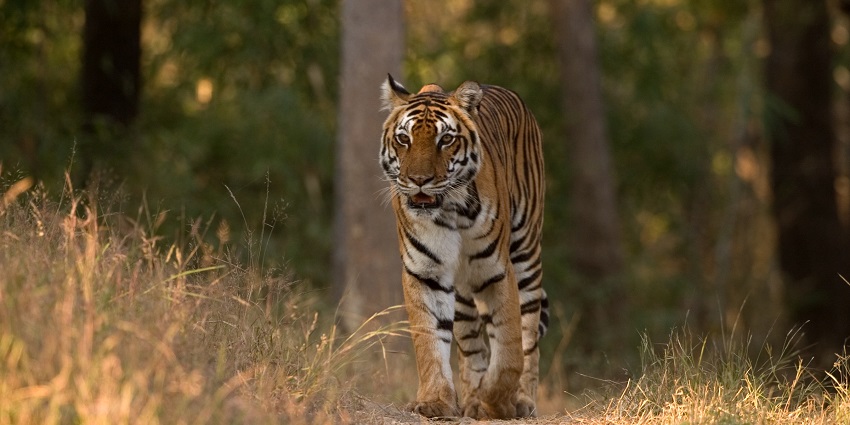
Photo: Kalyan Varma / Wikimedia Commons
Kanha’s open grasslands blend naturally with bamboo patches and dense forests. It creates a landscape that inspired the setting of ‘The Jungle Book’, Rudyard Kipling’s famous novel. In this area, tigers mark their territory by clawing trees, while swamp deer graze in groups across open grasslands. On early morning drives, visitors can spot large wild cows emerging from the mist as grey monkeys call out warnings from the treetops. Beyond the open plains, the park’s small hills hide black bears digging for insects, occasionally visible from good viewing spots. This park offers one of the biggest jungle safaris in India.
Major Attractions: Kanha Museum, Bamni Dadar
Ideal Trip Duration: 2 – 3 days
Nearest Airport: Jabalpur Airport (approximately 165 km away)
Nearest Railway Station: Gondia Railway Station (approximately 145 km away)
3. Bandhavgarh National Park
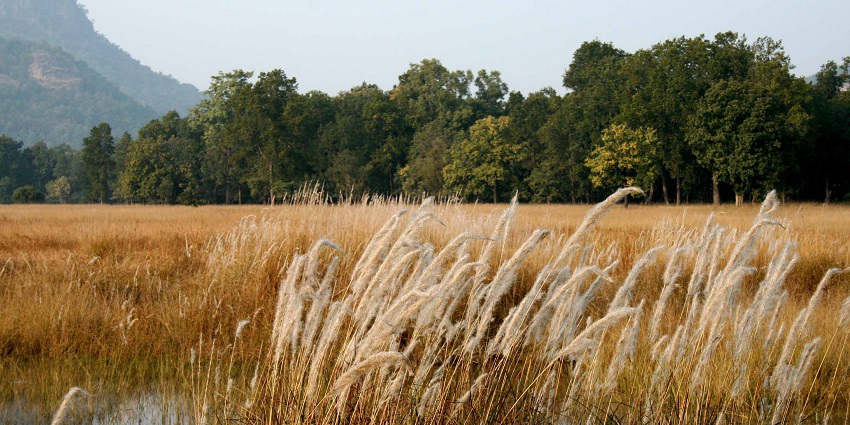
Photo: Tom Thai / Wikimedia Commons
Bandhavgarh’s old hills create different land levels and have the most tigers in India. As the morning sun lights up grassy areas, spotted deer eat under big trees while staying alert for hunters. A large fort on an 800-meter-high flat hill overlooks forests where tigers often cross main tracks. Visitors also frequently spot wild pigs digging in the bamboo areas in the soft soil. During the hot months, waterholes attract animals from across the park, especially tigers seeking relief from the heat. Since the park is small, the core area around Tala offers the best chances for wildlife sightings.
Major Attractions: Bandhavgarh Fort, Shesh Shaiya
Ideal Trip Duration: 2 – 3 days
Nearest Airport: Jabalpur Airport (approximately 200 km away)
Nearest Railway Station: Umaria Railway Station (approximately 35 km away)
4. Ranthambore National Park
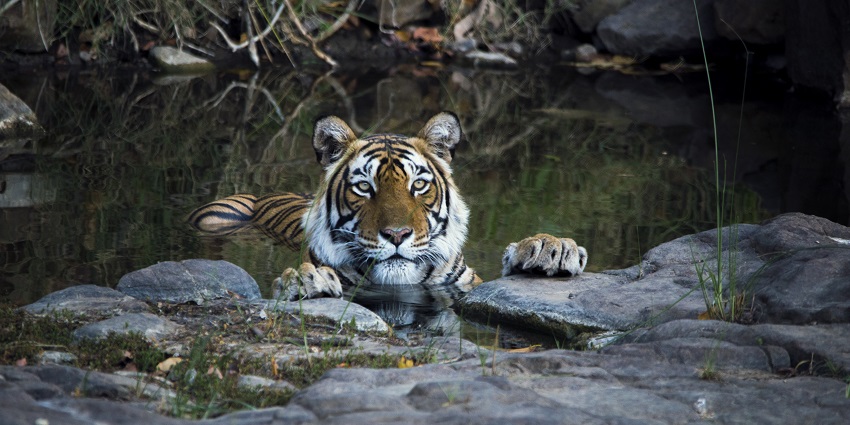
Photo: Saurabhsawantphoto / Wikimedia Commons
Ranthambore combines wildlife with history, as tigers roam near the ruins of a thousand-year-old fort. The park’s dry forests open into grasslands with old hunting lodges, where large water lizards rest by the lakes. Here, one of the biggest jungle safaris in India cover six zones, offering views of rocky hills, fields and valleys. Tigers here are familiar with vehicles and sometimes walk along the roads as visitors watch. By midday, lakes reflect the remains of ancient walls, while large deer sound alarm calls when predators are nearby. In summer, animals gather at the few remaining water sources, making sightings more common.
Major Attractions: Ranthambore Fort, Padam Talao
Ideal Trip Duration: 2 – 3 days
Nearest Airport: Jaipur International Airport (approximately 180 km away)
Nearest Railway Station: Sawai Madhopur Railway Station (approximately 14 km away)
5. Kaziranga National Park
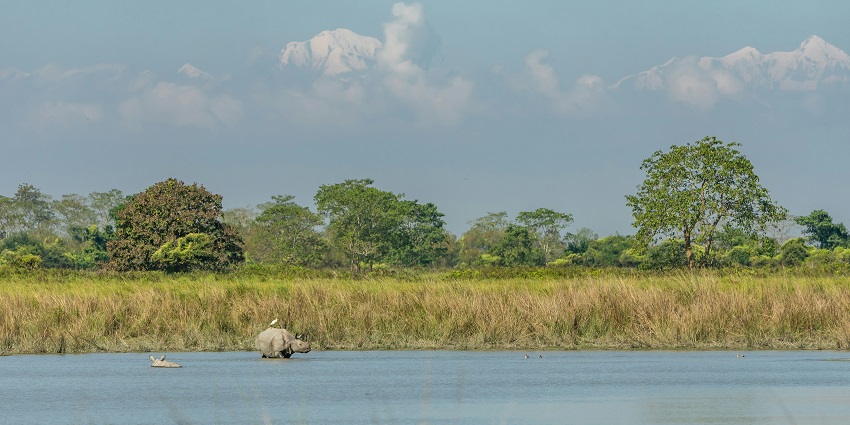
Photo: Hans-Jurgen Mager / Unsplash
Kaziranga lies on the flat plains of the Brahmaputra River, providing a habitat for most of the world’s one-horned rhinos. At sunrise, elephant rides pass through tall grass, where groups of rhinos can be seen feeding. Nearby, large wild buffalo with long horns move through wetlands while small deer dart between clearings. The park is divided into four zones, each with different wildlife. Rhinos are commonly seen in the eastern zone, while the western zone is better for spotting tigers.
Major Attractions: Kaziranga National Orchid Park, Kakochang Waterfalls
Ideal Trip Duration: 2 – 3 days
Nearest Airport: Jorhat Airport (approximately 97 km away)
Nearest Railway Station: Furkating Railway Station (approximately 75 km away)
6. Sundarbans National Park
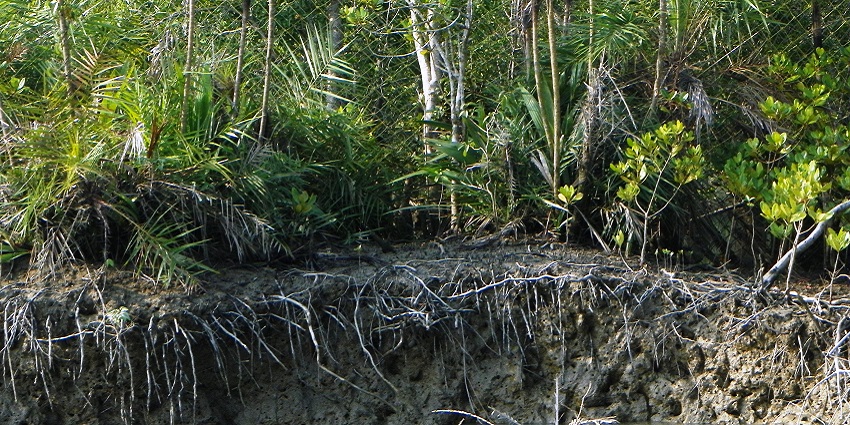
Photo: Oo91 / Wikimedia Commons
The Sundarbans is a forest where water levels rise and fall with the tides. Boats move through narrow rivers between islands, where tigers sometimes swim and hunt along the muddy shores. Tree roots grow above the water, making thick barriers while sheltering fish and other animals. Saltwater lizards rest on the mud when the water is low, and bright birds dive from branches to catch fish. Tall watchtowers in key spots help visitors see animals as they move with the changing water levels.
Major Attractions: Sajnekhali Watchtower, Sudhanyakhali Watchtower
Ideal Trip Duration: 2 – 3 days
Nearest Airport: Netaji Subhas Chandra Bose International Airport, Kolkata (approximately 112 km away)
Nearest Railway Station: Canning Railway Station (approximately 48 km away)
7. Gir National Park
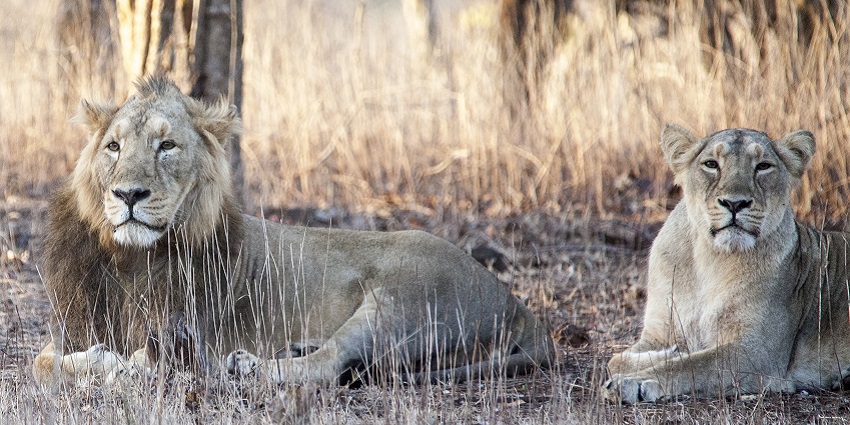
Photo: Stephenekka / Wikimedia Commons
Gir is the only place where Asiatic lions still live in the wild. These lions have shorter manes and live in smaller groups than African lions. The park’s dry forests and grasslands provide food for prey like spotted deer and nilgai (blue bulls). Morning safaris often reveal lions rubbing against trees and spraying scent along dry riverbeds to mark their territory. To increase the chances of spotting them, safari routes pass through different areas. These include rocky terrain where lions rest during the midday heat and open grasslands where they start hunting as the evening air cools.
Major Attractions: Kamleshwar Dam, Kankai Mata Temple
Ideal Trip Duration: 2 – 3 days
Nearest Airport: Diu Airport (approximately 110 km away)
Nearest Railway Station: Junagadh Railway Station (approximately 80 km away)
8. Tadoba Andhari Tiger Reserve
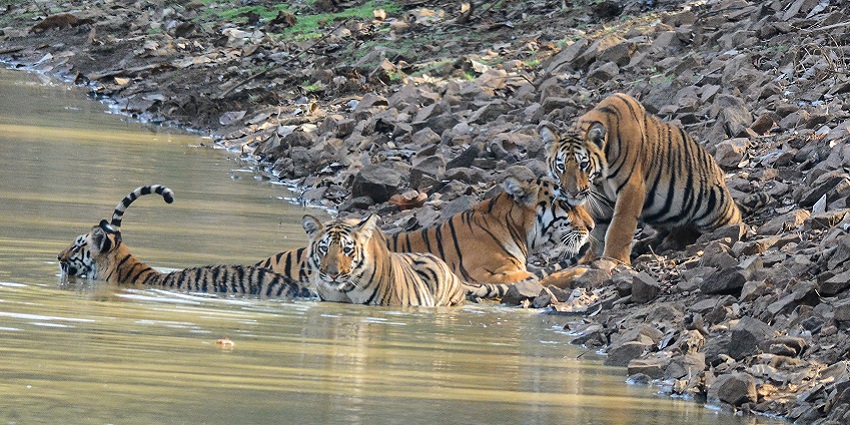
Photo: Saumitra Newalkar / Wikimedia Commons
Tadoba well joins bamboo woods with open spaces around middle lakes that bring tigers during the summer heat. In the morning, fog creates beautiful views as big cats and bears move through forests. White trees standing out against dark leaves. Unlike more well-known parks, Tadoba offers close animal watching along good paths without crowds. Throughout the day, big wild cow herds move between eating areas while wild dogs hunt in teams through open parts. Because of its shape, the park’s mixed ground makes different small living spaces, helping many animal viewing chances throughout.
Major Attractions: Tadoba Lake, Moharli and Kolsa Ranges
Ideal Trip Duration: 2 – 3 days
Nearest Airport: Dr. Babasaheb Ambedkar International Airport, Nagpur (approximately 140 km away)
Nearest Railway Station: Chandrapur Railway Station (approximately 45 km away)
9. Periyar National Park
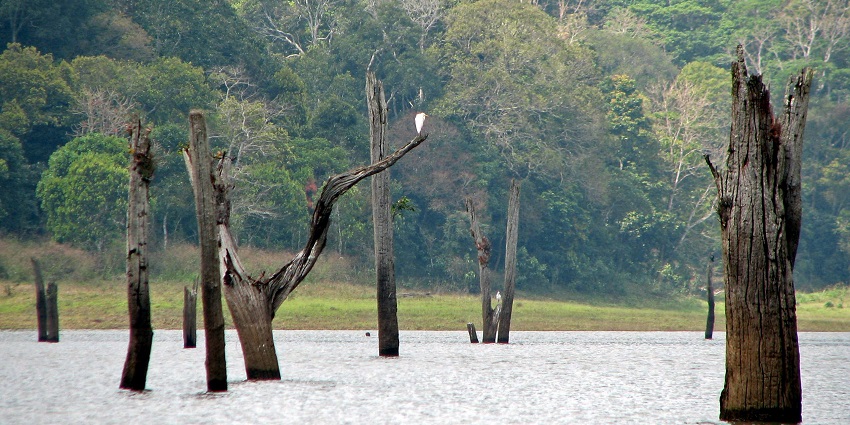
Photo: Bernard Gagnon / Wikimedia Commons
Periyar has a large lake dammed by the Periyar River, offering unique boat rides in South India. In the morning, mist rises over the water, surrounded by the evergreen forests of the Western Ghats. Elephants gather in family groups along the shores, while wild bison emerge from dense vegetation during the early hours. Instead of regular jeep safaris, bamboo rafts provide a quiet way to observe animals near the water. Beyond the lake, guided walking trails lead through the forest. Here visitors can spot giant squirrels leaping between trees and various local bird species.
Major Attractions: Periyar Lake, Mangala Devi Temple
Ideal Trip Duration: 2 – 3 days
Nearest Airport: Cochin International Airport (approximately 190 km away)
Nearest Railway Station: Kottayam Railway Station (approximately 114 km away)
10. Hemis National Park
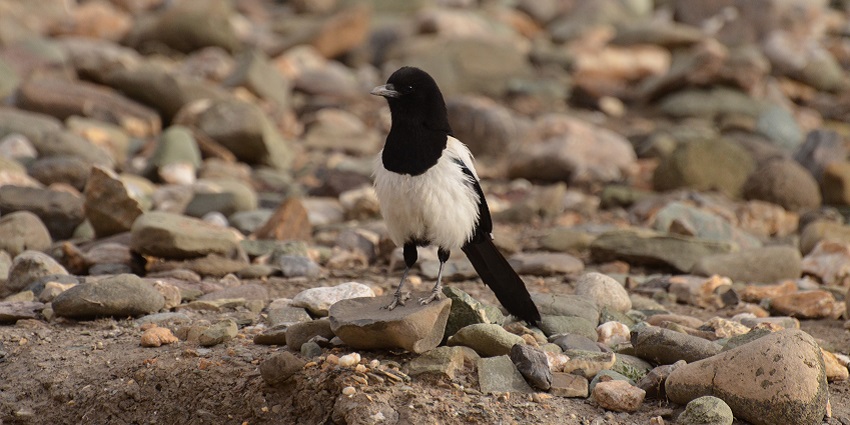
Photo: Kulbhushansingh Suryawanshi / Wikimedia Commons
Hemis has steep mountain slopes where rare snow leopards move through rocky terrain marked by colourful prayer flags. These are believed to spread blessings with the wind. Their footprints are visible in the snow in winter, while summer brings green meadows with mountain sheep. The park’s clear air makes it a great place for photos, with peaks over 6,000 meters in the background. Early in the morning, patient visitors with binoculars might see a snow leopard hunting on the ridges. Getting to the park requires a tough hike through deep valleys, where animals hide among rocks and birds fly above.
Major Attractions: Hemis Monastery, Ganda La Pass
Ideal Trip Duration: 3 – 4 days
Nearest Airport: Kushok Bakula Rimpochee Airport, Leh (approximately 50 km away)
Nearest Railway Station: Jammu Tawi Railway Station (approximately 700 km away)
The biggest jungle safaris in India take you through diverse landscapes, from dense forests to open grasslands. They offer a chance to witness incredible wildlife up close. Each park has its unique ecosystem, shaped by geography and seasonal changes. Tracking tigers, spotting rhinos, or exploring wetland reserves, every safari offers a different experience. To experience these thrilling safaris and plan your adventure, book with TripXL for the best options.
Cover Photo: Timothy Gonsalves / Wikimedia Commons


 WhatsApp
WhatsApp
 Twitter
Twitter
